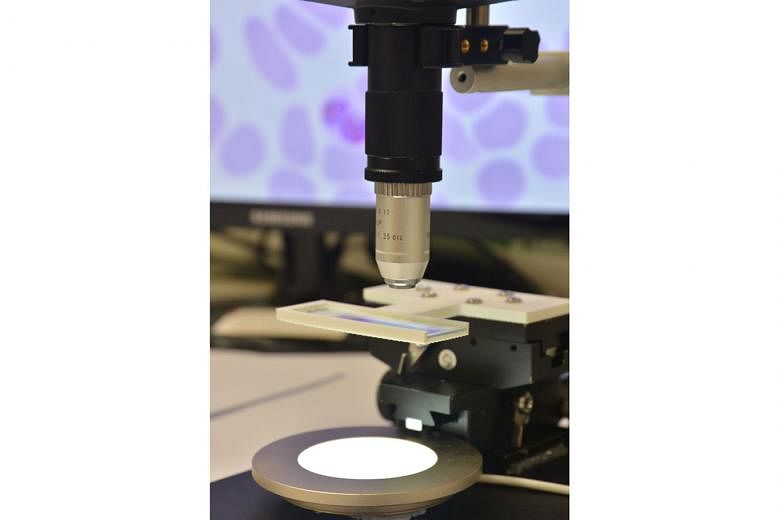Researchers from the Singapore University of Technology and Design (SUTD) have come up with a portable and cost-efficient device that can detect malaria within 30 seconds.
Presently, the gold standard for diagnosis of the mosquito-borne disease is examining a patient's blood smears through a laboratory microscope. This tool is not only bulky, but it also functions more slowly than the new technique.
The SUTD team's new and improved cytometer - a cell-counting device - minimises the time taken for diagnosis, which normally may be hours.
Malaria is a life-threatening disease caused by parasites that are transmitted to people through the bites of infected female Anopheles mosquitoes. Symptoms include shaking chills, high fever and sweating.
The new device, primarily composed of a raised lens and colour camera, does away with the laborious process of manually counting infected blood cells to determine the percentage of the patient's red blood cells that are infected with malaria.
Instead, it employs image processing and machine-learning algorithms to count these cells digitally.
It is also a much cheaper alternative to the cytometers within research facilities that have the same capabilities for malaria detection.
The malaria cytometer costs US$600 (S$820), as opposed to any high-end commercial flow cytometer, which would typically have a US$100,000 price tag.
Said Dr Ye Ai, one of two assistant professors involved in the research: "This portable image-based cytometer has great potential as an accurate and cost-effective tool for routine malaria diagnosis in the field or resource-limited regions".
Added Dr Rajesh Chandramohanadas, the second assistant professor: "With our current portable cytometer, we are able to detect very low levels of infection from laboratory samples."
According to a report by the World Health Organisation in 2015, 1.4 million people across South-east Asia alone are at risk of malaria.
Singapore, despite being malaria- free since 1982, is also vulnerable to the disease, due to the influx of travellers and foreign workers.
With the malaria parasites' increasing resistance to current drugs, the device could help detect the disease fast, so that the appropriate medications can be given before complications arise.
Commenting on the effort, malaria expert Kevin Tan of the National University of Singapore's Department of Microbiology and Immunology said: "Singapore hospitals may also find this useful in place of human operators who are prone to fatigue and subjective analysis."
The SUTD team is now looking for additional funding to do a larger trial in the field. Their article was published in the peer-reviewed scientific journal PLOS One.


